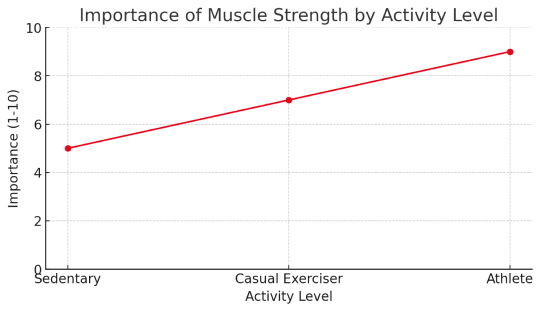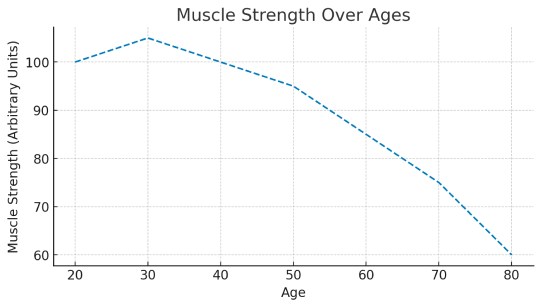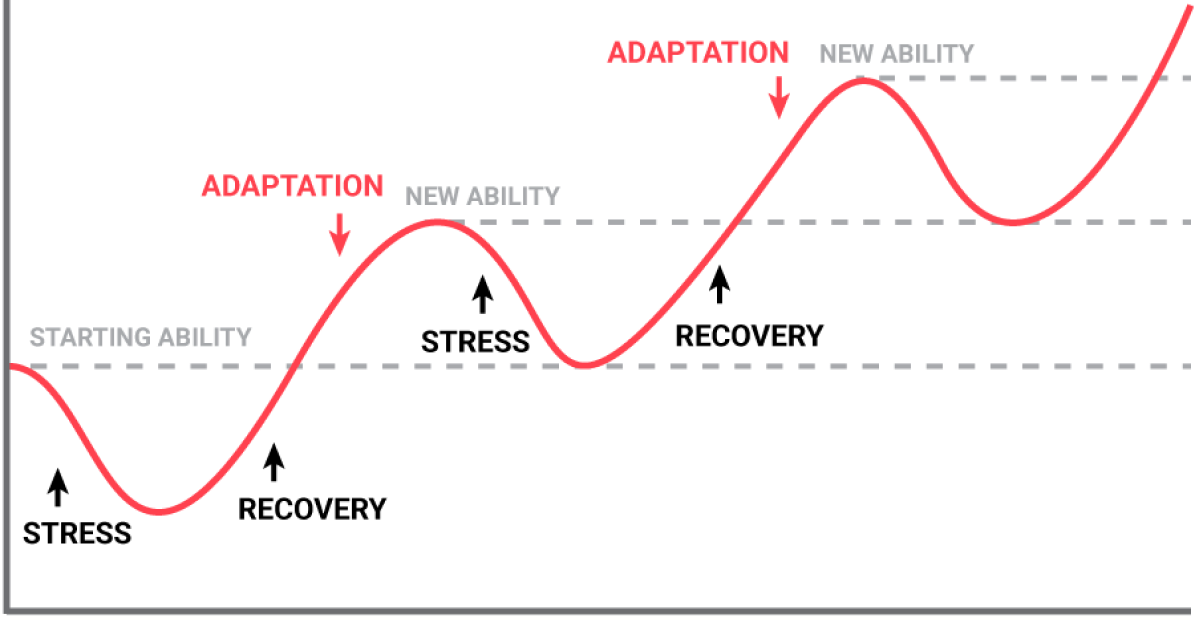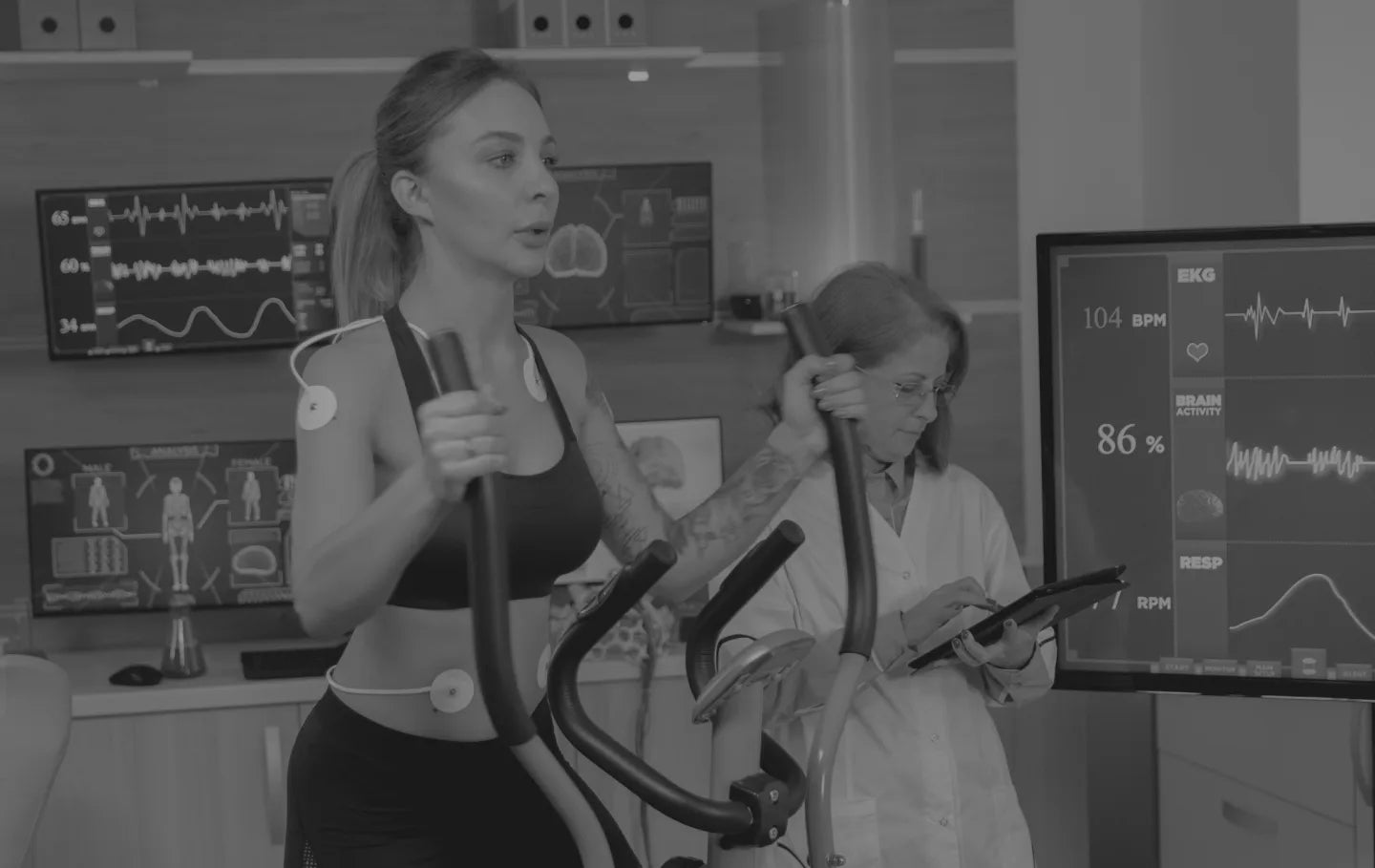What is Muscle Strength?
Muscle strength is literally the maximum force that your muscles can exert in a single effort or contraction: It's not just about how much weight you can lift or how hard you can push against resistance. ddd
Muscle Strength & Human Performance
Muscle strength is a vital indicator of health for everyone; especially athletes. Muscular state, mainly strength, directly affects your ability to physically perform, your experience with joint aches, muscular pains & risk of injury, and even impacts your metabolic health.
Muscular Load Limits
Muscles & tendons (the tissue connecting muscle to bone) are designed to handle specific amounts of stress. When demands, such as exercise, placed on them surpass their ability to absorb and adapt to that stress, aches, strains, pain, and severe injury can occur. Common ailments resulting from excessive demands include:
Muscle Strains
A muscle strain occurs when muscle fibers are overstretched or torn.
Ligament Sprains and Tears
Ligaments, which connect bone to bone, can also be injured when the load exceeds their capacity. Sprains involve the stretching or tearing of ligaments and can range from mild to severe, depending on the extent of the damage.
Tendonitis
Tendonitis is the inflammation of a tendon and is often a result of repetitive stress or sudden, excessive load.
Joint Injuries
Excessive load can also lead to joint injuries, including dislocations and cartilage damage. These injuries can alter the mechanics of a joint, leading to chronic pain and arthritis if not properly managed.
Tendinopathy
Tendinopathy (formerly known as tendinitis) refers to a chronic condition resulting from the accumulation of microtears in the tendon due to repetitive overloading.
Increase muscle strength, tendon strength, or both.
Muscle Strength, Activity Level, & Age

The graph displays the Importance of Muscle Strength by Activity Level, showing a clear trend where the importance of muscle strength increases from sedentary individuals to athletes.

The second graph illustrates Muscle Strength Over Ages, depicting a hypothetical peak in muscle strength during the mid to late twenties followed by a gradual decline with age, highlighting the natural progression of muscle strength over a lifetime.
What is optimal strength?
That depends and is highly individualised. The goal however, is to have sufficient strength such that the demands imposed are within the capacity of the muscles and tendons such that they can easily absorb and adapt. Lack of pain and an ability to mobilise comfortably in the presence of imposed demands are good indicators of sufficient muscle strength.
How to Improve Muscle & Tendon Strength
Improving muscle and tendon strength fundamentally relies on the principles of stress and adaptation. When muscles and tendons are subjected to stresses beyond their current capacity, through resistance training/exercise, it triggers biological processes that cause the muscle fibers and tendon tissues to repair and rebuild themselves stronger and more resilient than before. This process, known as hypertrophy for muscles, involves the synthesis of new protein strands that thicken and strengthen the muscle fibers. For tendons, the adaptation process involves the alignment of collagen fibers in a way that makes the tendon more capable of handling stress.
Progressively increasing the load capacity of muscles and tendons can lead to improved athletic performance, prevention and rehabilitation of ailments and injury, in addition to improving overall daily function.
Recovery matters
Stress-Recovery-Adaptation

As depicted above, repetitive stress to cause adaptation must be balanced with recovery. Without adequate recovery, too much repetitive stress can cause a decrease in load capacity.
The recovery period facilitates the repair and growth of muscle fibers and tendons, which have been stressed during exercise. This period of rest allows the body not only to repair these tissues but also to adapt and strengthen them, preparing them for future physical challenges.
Additionally, recovery aids in the removal of waste products accumulated in the muscles, such as lactic acid, which helps in reducing soreness and improving muscle function. This process is crucial for optimizing performance, as it ensures that muscles are replenished, free of waste, and stronger, enabling individuals to perform better in their next exercise session. Essentially, recovery is the time when the body undergoes necessary adaptations and healing, setting the stage for improve performance and enhanced daily functioning.
Suji unlocks blood flow restriction (BFR) training so you can increase muscle strength and accelerate muscle recovery anywhere, anytime: quickly and conveniently. As mentioned previously, strong and recovered muscles and tendons improve athletic performance as well as enhance daily living. However, allocating dedicated time to complete very specific exercises that improve isolated muscle and tendon strength is often not convenient, can consume time preferably spent participating in enjoyable sports (e.g. Crossfit, Running, or Golf), and when dealing with aches & pains, is uncomfortable.
By employing BFR training, Suji offers muscle & tendon recovery and strengthening that conveniently supplements normal exercise participation without aggravating existing aches and pains. Guided via the Suji companion platform you can complete 10 to 30 minute strengthening and recovery sessions at home; immediately prior to or after exercise; or even whilst travelling.
